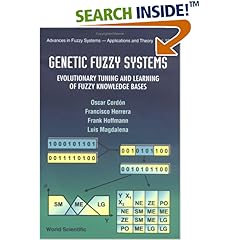This book by Oscar Cordón, Francisco Herrera, Frank Hoffmann, Luis Magdalena introduces the general concepts, foundations and design principles of genetic fuzzy systems and covers the topic of genetic tuning of fuzzy systems. A valuable compendium for scientists and engineers concerned with research and applications in the domain of fuzzy systems and genetic algorithms.
Ordering Messy GA (OmeGA) in C++
for IlliGAL Report 2000034.
Ordering Messy GA (OmeGA) in C++
for IlliGAL Report 2000034.
Related Posts
Learning Classifier Systems : From Foundations to Applications
Learning Classifier Systems (LCS) are a machine learning paradigm introduced by John Holland in 1976. They are rule-based systems in which learning is viewed as a process of ongoing adaptation to a partially unknown environment through genetic algorithms and temporal difference learning. This book provides a unique survey of the current state of the art of LCS and highlights some of the most promising research directions. The first part presents various views of leading people on what learning classifier systems are. The second part is devoted to advanced topics of current interest, including alternative representations, methods for evaluating rule utility, and extensions to existing classifier system models. The final part is dedicated to promising applications in areas like data mining, medical data analysis, economic trading agents, aircraft maneuvering, and autonomous robotics. An appendix comprising 467 entries provides a comprehensive LCS bibliography.
Classifier Fitness Based on Accuracy
In many classifier systems, the classifier strength parameter serves as a predictor of future payoff and as the classifier’s fitness for the genetic algorithm. We investigate a classifier system, XCS, in which each classifier maintains a prediction of expected payoff, but the classifier’s fitness is given by a measure of the prediction’s accuracy. The system executes the genetic algorithm in niches defined by the match sets, instead of panmictically. These aspects of XCS result in its population tending to form a complete and accurate mapping X x A => P from inputs and actions to payoff predictions. Further, XCS tends to evolve classifiers that are maximally general subject to an accuracy criterion. Besides introducing a new direction for classifier system research, these properties of XCS make it suitable for a wide range of reinforcement learning situations where generalization over states is desirable.
The paper can be downloaded at: http://citeseerx.ist.psu.edu/viewdoc/summary?doi=10.1.1.38.6508

